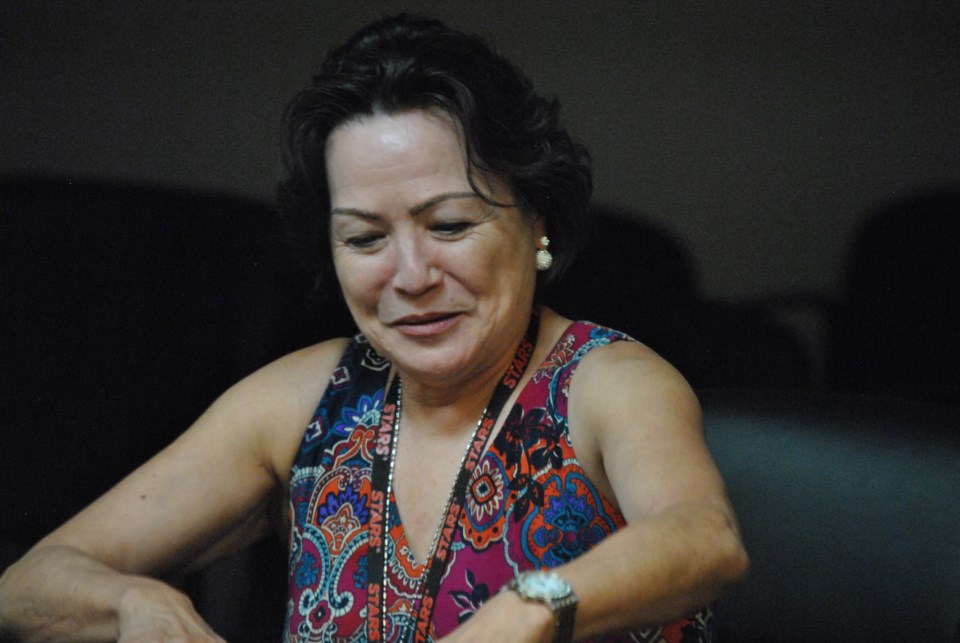BARRHEAD - STARS Air Ambulance will have to wait a little longer to find out if they can add the Town of Barrhead to its list of municipal supporters.
STARS is a non-profit society, founded in Calgary in 1985, that provides air ambulance services to critically-ill patients in Alberta, as well as northeastern B.C., Saskatchewan and Manitoba. This year marks its 38th year of operation.
STARS municipal relations liaison Glenda Farnden asked Town of Barrhead councillors during their June 13 meeting to add an annual contribution of $7,500 as a line item to their budget.
Council passed Farnden's presentation as information.
Mayor Dave McKenzie noted that the council has multiple retired first responders (McKenzie is a retired RCMP member, while councillors Don Smith and Ty Assaf both served on the Barrhead fire department) and were very familiar with the service STARS provides.
"I'm sure council will be favourable to your request, but we just have to chat about it a bit," he said.
To operate the three Alberta STARS bases, Farnden said, it costs roughly $30 million.
"This does not include Calgary's dispatch centre, pilot and medical staff education, or anything directly tied to operations," she said.
Out of that base operational funding, the province, through Alberta Health Services (AHS), provides $15 million.
Farnden noted that this is a recent development, adding that in 2022 the province announced that they would bump up the government's contribution.
She said the move brings Alberta in line closer to Saskatchewan and Manitoba. Saskatchewan provides 50 per cent of STARS operational costs, while the Manitoba government is 100 per cent.
However, Farnden said there is no guarantee that Alberta will continue funding STARS to that level, adding they are currently negotiating with AHS for a new 10-year service agreement.
And that is why, she said, the agreements and partnerships STARS has with municipalities are so important.
Presently, STARS receives just over $2 million annually from agreements it has with municipal governments.
"This is sustainable support for STARS for operations … especially in dealing with the aftermath of COVID, the wildfires, and just an increase in demand. We are experiencing a 35 per cent increase in our mission rates," Farnden said. "Then we have escalating fuel and medical supply costs; it is never-ending."
She added in the past, most of the rural municipal support for STARS has come from counties and municipal districts.
But increasingly, Farnden added, they are forming regional alliances with their urban counterparts.
She said most urban municipalities (i.e., towns and cities) contribute $2 per capita annually, noting that some contribute as much as $8 per capita. In contrast, the contribution can be as high as $95 per capita for rural municipalities.
"This is because they recognize STARS is an essential service for their residents," Farnden said.
Last spring, the County of Barrhead increased its contribution from their usual $1 per capital to a flat rate of $7,500 at the request of STARS. Neighbouring Woodlands County contributes at a $3 per capita rate.
Taking a closer look specifically at STARS activity in the Barrhead region from 2018 to 2022, there have been 61 missions, 46 of which have originated from the Barrhead Healthcare Centre as critical inter-facility transfers, 10 have been from Barrhead-area scene calls, while five have from the Lac La Nonne or Neerlandia area.
"It is important to remember that we are critical care," Farnden said. "We do not get called out because someone has a broken leg."
She also noted that residents do not live in "a bubble" and often travel to nearby communities, adding if one expands the geographical area to include Woodlands County, Westlock County, and Lac Ste. Anne County, over the same period, STARS has flown 455 missions.
Farnden also noted that what STARS provides is not just air transportation from trauma scenes or rural hospitals to facilities with more treatment tools but what amounts to a complete, flying intensive care unit.
She outlined the specialized equipment each STARS helicopter carries, such as the handheld i-stat lab, which is the size of a cellphone and allows EMTs and trauma physicians that often go along on missions to check hemoglobin, blood gasses and electrolytes in less than two minutes; a video laryngoscope, enabling medical staff to intubate patients with nearly blocked airways; a ventilator; a handheld ultrasound unit; an EZIO drill for quick administration of difficult IVs; and a large complement of medications including thrombolytics for stroke victims as well as two universal blood units for transfusions.
Farnden noted that along with the advanced medical equipment, STARS also have specialized medical teams, including physicians at its Calgary link centre, that oversee missions and talk to the medical personnel on the scene, and trauma doctors that fly on up to 20 per cent of all flights, especially those to rural hospitals such as Barrhead, along with world-class EMTs and pilots who consistently place in the Top 3 in the Air Medical Transport Conference SIM Cup competition.
Barry Kerton, TownandCountryToday.com



